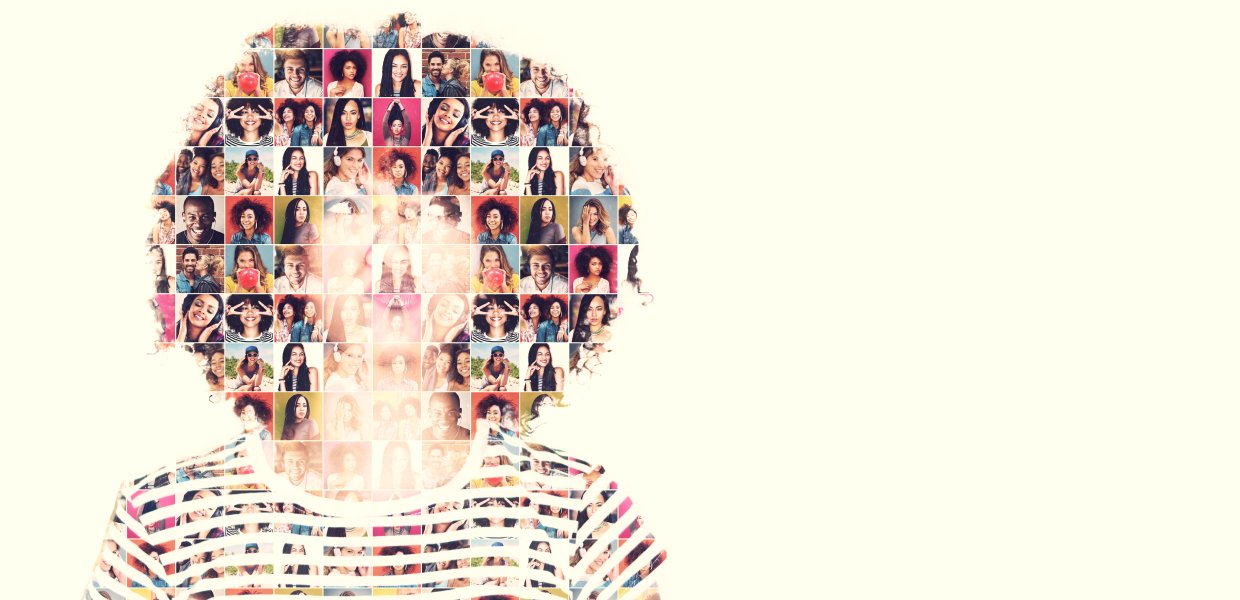Focusing on identity through media literacy
Dillan Barmache, a high-school senior, visited USC Annenberg along with his teacher, Mara Gellman, and fellow students from Canoga Park High School. There, they met with Alison Trope to share the media work they were doing in their honors English class.
Barmache, who is non-verbal autistic, presented a critique of an iPad Pro campaign that was launched in observance of National Autism Day and that featured him.
“I am not very often a composed, serious and determined young man,” he said. “It’s like looking into a mirror and seeing an actor do an impression of me that is better than the truth.”
Barmache’s sense of conflicting representations was part of a larger discussion he engaged in with Gellman, who participated in the Critical Media Project workshop led by Trope in June. Fifty Los Angeles Unified School District (LAUSD) instructors — primarily teachers working in underserved communities — took part in Trope’s one-day training session.
“The ‘Aha’ moment for me,” Gellman said, “was when I realized I could tie this into the common core standards for English, create a unit on critical media literacy — and bridge it to curricula I was already mandated to teach.”
Gellman now urges her students to think about their identities and how they receive information from the media, and in return, how they view themselves.
Trope, clinical professor of communication at USC Annenberg, created the workshop to provide teachers with a foundation to explore topics and new curricula surrounding representations of race, ethnicity, gender, sexuality, disability and socio-economic class. In addition, she said, teachers learn how to equip students with the tools they need to decode media and create their own positive representations.
“I encourage teachers to take a deeper approach. I want them to analyze and navigate media representations in multiple subjects, such as addressing poverty or socio-economic issues in a math class or race and gender in the context of an English or social studies class,” Trope said.
In addition, Trope connects USC students with the teachers and students who take part in the training workshops. As part of her new course, “COMM 367: Community Engagement and Service Learning,” students travel to high schools in the South Los Angeles area. The class is also part of a new USC Annenberg minor: Justice, Advocacy and Change.
“When we think about the different communities around USC, we are thinking about communities that are grappling with a lot of these issues — because they are presented largely with media that doesn’t represent them or represent them in a way that feels accurate,” Trope said.
Over the course of a semester, the USC students are asked to create four lesson plans in consultation with Trope. They engage in observation and conduct a population analysis. Then, as they begin to get familiar with a particular school, they collaborate with the high-school students to choose topics for a final project.
Communication major Sarah Livingston is teaching junior- and senior-level English high-school students at Diego Rivera Learning Complex.
“I want the students to become familiar and not see me as an outsider, but more as a part of the community. And I want them to feel empowered and understand their roles in consuming and producing media,” Livingston said.
By the second week, students are picking up cues and interacting with different media. “We played a Beyoncé video, and I think that got them excited about what it means to be a minority and a woman,” Livingston said.
Trope, who values the importance of high school not only as a stepping stone for college, but as a vehicle for molding one into adulthood, also thinks it prepares students for professional life.
“There’s a way in which getting schooled and getting awareness of identity — your own and other people’s — is very important in thinking about how you negotiate the workplace, the world around you and how you’re aware of what you say,” Trope said. “It can affect the kind of bias you bring into a conversation.”
“When I’m testing it,” Gellman said, “melding the curriculum with the critical media project, there’s an energy to it. It’s an experiment. I can tell you this, my students are engaged.”
